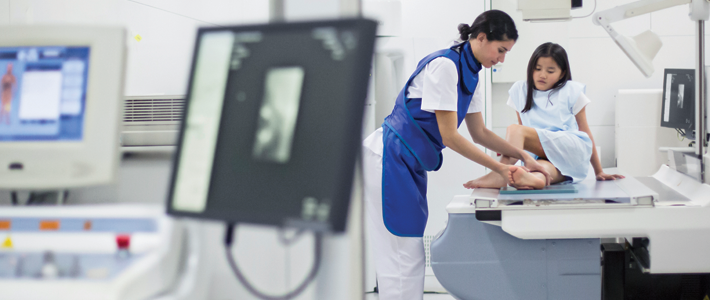Table of Contents
What are X-ray scans used for?
X-rays are most often used to look at bones and joints, but they can also be used to detect certain soft tissue issues. For instance, a tumor is denser than soft tissue, so it appears white on the X-ray image. Your doctor might order an X-ray scan for possible bone fractures, tooth problems, foreign objects, or abnormal masses. X-rays can examine most areas of the body.
How do X-rays work?
A negatively charged electrode is heated by electricity, and electrons are released, producing energy. The energy is directed toward a metal plate at a high velocity, and this produces an X-ray. During an X-ray, a cassette is placed behind the area being scanned. The X-ray passes through skin, muscles, and organs and appears dark on the film. Denser areas such as bones and tumors absorb the X-ray energy, and they do not expose the film. Therefore, these areas appear white on the image.
How is an X-ray scan performed?
X-ray scans differ slightly depending on which part of your body is being scanned. Most X-rays do not require the patient to change their routine prior to the exam. However, you should follow any advice given to you by your doctor. It might be necessary for you to change into a gown before the scan. You will likely be positioned on an X-ray table that carefully places the body part being scanned between the machine and a specialized image plate. A technologist will guide you through the process, capturing different angles if needed and ensuring that the images are of clear quality. Usually, an X-ray takes less than 15 minutes to complete, but some scans take longer. The radiologist will read your X-ray images and send a report to your doctor within 1-2 days, and your doctor will review the findings with you.
Are there any risks associated with X-ray?
X-rays use a small amount of ionizing radiation to evaluate parts of the body to detect diseases such as pneumonia, bone fractures or other diseases. So the question is how safe are X-rays? All living things on planet earth are exposed to daily amounts of radiation from the sun (cosmic radiation) and the earth (radon). Although we recommend minimizing radiation, often the benefit of X-rays outweigh the risks. To put the amount of radiation into perspective, a chest X-ray is about half of the radiation dose as a flight from New York to LA because the higher we fly the higher the dose of cosmic radiation we receive from the sun. A chest X-ray is about twice the radiation the average human receives in a normal day on earth from background radiation.
X-Ray at ExpertMRI
ExpertMRI offers X-ray imaging at our 11 locations around Southern California. If you are interested in receiving an X-ray scan at ExpertMRI, please contact us at 877-674-8888.














